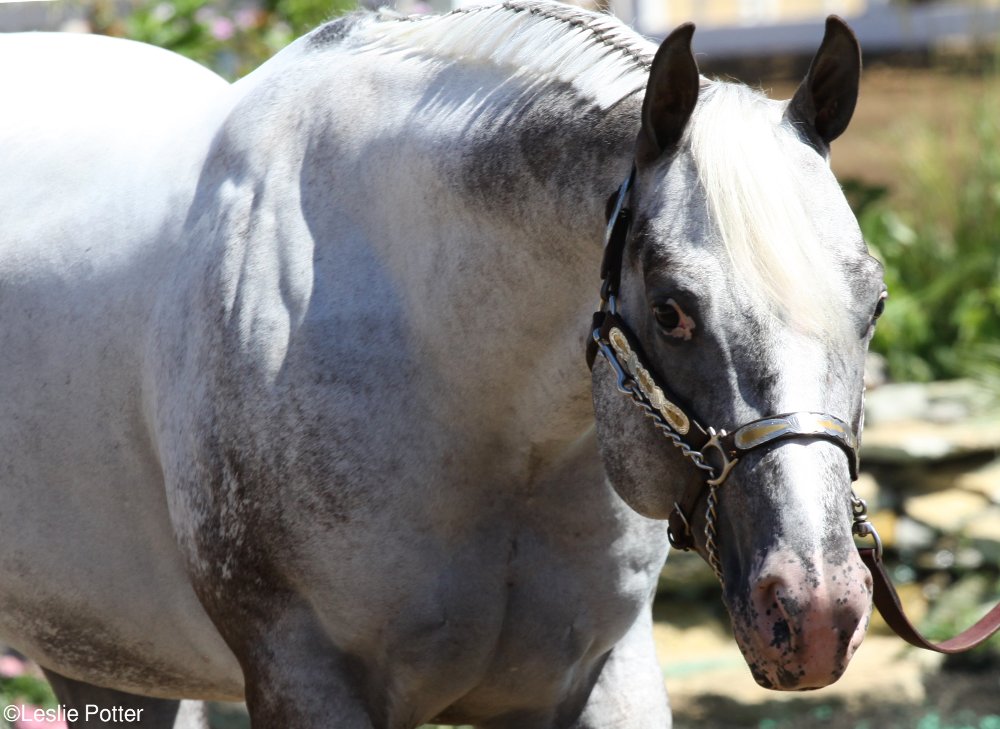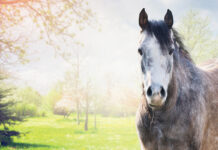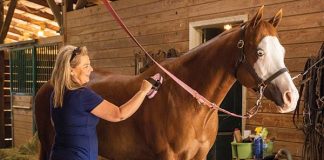
Q: I have an Appaloosa/Paint mix, and my farrier once mentioned to me to be careful about moon blindness. What is it, what breeds does it affect, what can be done to prevent it, and once it’s contracted, what are the treatment options? Since my horse is a mix, is he less likely to contract moon blindness?
A: To make sure I cover all your questions, let’s tackle them one at a time.
What is it?
“Moon Blindness” is technically known as Equine Recurrent Uveitis, which means that it occurs in horses, is a chronic condition, and causes inflammation (“itis”) of the uvea, or inner structures of the eye. It is one of the most common eye conditions of horses and the leading cause of equine blindness. It gets its name from the waxing and waning course of the disease, where active bouts of inflammation are followed by weeks, months, or even years of apparent inactivity. However, ERU is an auto-immune disease where the body’s own immune system may continue to attack eye tissue in between obvious episodes. These attacks produce signs such as squinting, tearing, “red eye,” a cloudy eye, swelling, and sensitivity to the sun.
What breeds does it affect?
There appears to be a genetic component to this syndrome, as Appaloosas are more likely to develop ERU. Warmbloods and draft breeds also seem to be at slightly higher risk than the general equine population.
What can be done to prevent it?
Leptospirosis, a bacterial infection, has been associated with ERU, so efforts to reduce a horse’s exposure to the disease (such as avoiding water from lakes, ponds, rivers, and streams) may aid in prevention. Otherwise, close observation for any abnormality of the eyes and prompt examination, diagnosis, and treatment by a veterinarian may help control inflammation before permanent damage occurs.
What are treatment options?
Aggressive anti-inflammatory medications, both steroidal and non-steroidal, are generally prescribed topically (directly in the eye) as well as systemically (injected or fed orally) to limit eye tissue damage. Dilating agents such as atropine may also be used to relieve pain and prevent complications. If an underlying cause for the condition can be found during the physical and ophthalmological examinations, then this would be specifically treated too, perhaps with antibiotics. Consistent treatment and follow-up are important because each attack causes more permanent damage, eventually leading to blindness and perhaps even removal of a severely affected and painful eye, called enucleation. Some horses remain on anti-inflammatory medication (like aspirin) for life, in an attempt to prevent flare-ups of the disease. Fly masks can be a helpful management tool during and between attacks to protect the eyes.
Is a crossbred horse less likely to contract it?
Since experts aren’t exactly sure what causes Appaloosas to be at a higher risk for developing ERU, it’s not clear if being full-bred or part-bred makes a difference.







